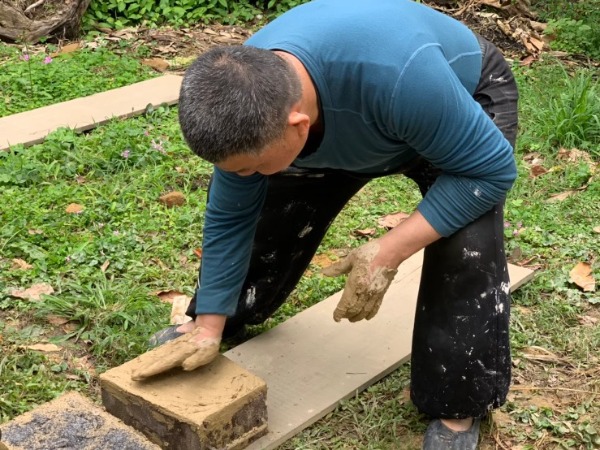Adobe bricks were a very versatile building material in ancient times. Depending on the use and structure of the object being built, adobe bricks of different shapes andsizes can be produced with different molds. In the early days, before producingbricks, people would lead cattle to stomp on the earth while adding the appropriate amount of water to mix thoroughly. Viscous clay with low sand content is ideal for making bricks. Once it is adjusted to the right viscosity and wetness, it is ready to be molded into bricks.

A total of 3000 adobe bricks were produced to build the Zhunan Snake Kiln. Thearch structure in the kiln is closely related to the shape of the bricks, as bricks of different designs would be molded depending on the requirements of the kiln. Forexample, the walls of the snake kiln were built with rectangular (36 x 9 x 24 cm)adobe bricks, while trapezoidal bricks were used for the arch. The brick laying requirements guided the design of the molds. In the early days, wooden molds were the most common, although the molds preserved at Zhunan Snake Kiln are made with iron frames with a wooden board used for demolding. A half-century has passed, and the adobe brick molds remain very much in working order.

let's start






After allowing to dry in the shade for several days, a trapezoidal adobe brick is ready for use to build an arch kiln!




